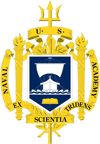According to the well-worn copies of the midshipmen manual Reef Points, “The mission of the Navy is to maintain, train and equip combat-ready Naval Forces, capable of winning wars, deterring aggression and maintaining freedom of the seas.” Not only does the U.S. Navy protect the seas with their state-of-the-art vessels, but they also safeguard the space above with over 3,700 Navy and Marine Corps aircraft, including combat aircraft, electronic warfare planes, maritime patrol planes, transport planes, helicopters and training vehicles. Here, we’re going to take a closer look at the U.S. Navy planes that fuel the most powerful air fleet on Earth along with our sister military branch, the Air Force.
What’s in a Naval Plane Name?
Through the years, the U.S. Navy has developed a standardized designation code to track the basic type or mission, design and series of each aircraft that they use. Here is how each is named:
Mission: Before the dash, the type or mission is identified:
A Attack
B Bomber
C Cargo/Transport
E Special Electronic Installation
F Fighter
L Laser
O Observation
P Patrol
R Reconnaissance
S Antisubmarine
T Trainer
U Utility
X Research
Mission Modifier: This letter may come before the above letter to indicate the modified mission or signify multiple missions:
A Attack
C Cargo/Transport
D Director
E Special Electronic Installation
F Fighter
H Search and Rescue/Medical Evacuation (MEDEVAC)
K Tanker
L Cold Weather
M Multimission
O Observation
P Patrol
Q UAV
R Reconnaissance
S Antisubmarine
T Trainer
U Utility
V Staff/VIP transport
W Weather
Design: After the letter/s and the dash, the design iteration starts with 1, 2 and continues. This is not always a perfect science, but rather a general rule of thumb.
Series: Following that, the use of A, B and continuing letters designates the series; it is updated when the basic design has been significantly changed.
The Naval Planes Arsenal
These are the planes that the U.S. Navy uses to help keep our seas and shores safe. They also use helicopters, and those will be explored in another post:
Combat Aircraft
F/A 18 Hornet and F/A 18 E/F Super Hornet: Now in its E/F iteration, this iconic naval fighter plane was the U.S.’s first strike-fighter. It has superior fighter and self-defense capabilities, and is well-recognized as the aircraft flown by the U.S. Navy’s Blue Angels Flight Demonstration Squadron, where it performs jaw-dropping gravity-defying highly synchronized stunts that are often just 18 inches apart. Learn more about the incredible Blue Angels planes and pilots here.
This latest model specializes in the full mission spectrum: air superiority, fighter escort, reconnaissance, aerial refueling, close air support, air defense suppression and day/night precision strike. Upgrades from the original F/A-18 A through D models include a longer range, an aerial refueling capability, increased survivability/lethality and improved carrier suitability, among others.
F-35 B/C Lightning II: Another fighter jet in the Navy collection, the F-35 resets the bar for a multirole fighter with state-of-the art stealth technology in an increasingly agile supersonic plane that takes pilot situational awareness, lethality and survivability to the next level. The F-35C Carrier Variant is the first in U.S. naval aviation history to feature a radar-evading capability.
AWACS: Airborne Early Warning and Control (AEW&C) Aircraft
E-2C Hawkeye: A carrier-based plane, the Hawkeye is not your typical aircraft. It is a twin engine high-wing turboprop with a radar rotodome built to accommodate five crew members and designed for early warning threat analysis, airborne battle management and command and control functions for the Carrier Strike Group and Joint Force Commander, in addition to providing many other important roles.
Electronic Warfare Aircraft
EA-18G Growler: This electronic attack plane takes off from the F/A 18F Super Hornet Block II, merging the Super Hornet’s speed and agility in combat with the most updated AEA avionics; it features weapons and sensors that make it a highly effective state-of-the art warfighter, like the Advanced Electronically Scanned Array (AESA) radar, digital data links and air-to-air missiles. It has self-protection capability and is adept at target identification and prosecution.
E-6 Mercury
This dual-mission aircraft is designed to connect the national command authority with the U.S. Navy’s nuclear missile force that’s carried aboard at-sea ballistic missile submarines. It’s a military-engineered commercial 707 civilian airliner and features a very low frequency communication system with dual trailing wire antennas, as well as an airborne launch control system (ALCS) that can launch U.S. land based intercontinental ballistic missiles.
Maritime Patrol Aircraft
P-3C Orion: This four-engine turboprop anti-submarine and maritime surveillance plane started as a land-based, long-range, anti-submarine warfare (ASW) patrol aircraft and now encompasses sea and land battlespace surveillance with long range and longer loiter time capabilities that often help ground troops, especially U.S. Marines. It also features advanced submarine detection sensors and can carry a mixed payload of weapons. The only remaining P-3Cs are in two Reserve units.
P-8A Poseidon: This aircraft marries the dependability and power of a Boeing 737-800ERX with the latest in open architecture mission system and next-generation sensors for formidable anti-submarine warfare (ASW) and anti-surface warfare (ASuW) capabilities. It also features a five-station weapons bay, four wing pylons, four wing pylons and two centerline pylons, all supported by digital stores management allowing carriage of joint missiles, torpedoes and mines.
EP-3E Aries II: This four turboprop engine plane can house 22+ crew members. An evolution of the 1950’s L-188 Electra, the ARIES (Airborne Reconnaissance Integrated Electronic System II) is the Navy’s only land-based signals intelligence reconnaissance aircraft and conducts top secret missions. The Aries has receivers and high-gain dish antennas to leverage electronic emissions from deep within targeted areas.
Transport Aircraft
C-2A Greyhound: Per its designation, this high wing twin-engine monoplane is engineered to transport high priority cargo, mail and passengers between shore bases and carriers, delivering essential logistics support to Carrier Strike Groups. It sets itself apart with an on-board Auxiliary Power Unit that enables engine-starting and ground power self-sufficiency in remote areas.
C-130 Hercules: The legacy C/KC-130T Hercules is a medium multi-role plane carrying up to 92 ground troops or 64 paratroopers with equipment, or 74 patients and caregivers. It provides the last logistical mile support. The upgraded KC-130J Super Hercules offers superior multi-mission service through aerial refueling and personnel or cargo transport for the U.S. Marines, as well as reconnaissance, search and rescue, humanitarian and medical help.
Multimission Aircraft
MV-22 Osprey: The U.S. Marine Corps foremost assault support plane carrying up to 24 troops, the Osprey can take off vertically like a helicopter, but has a turboprop’s range and speed. This aircraft is used for White House Staff as well.
Trainer Aircraft
T-34C Turbomentor: An unpressurized two-seat, tandem cockpit low-wing turboprop trainer that trains Navy and Marine Corps pilots.
T-6B Texan II: A single-engine, two-seat primary trainer used to train Joint Primary Pilot Training (JPPT) students in foundational flying skills needed for U.S. Air Force and Navy pilots.
T-45 Goshawk: A carrier ready tandem-seat jet trainer used to train Navy and Marine Corps pilots.
Watch Them Soar
There are many more naval planes. They include VIP transport planes like the C-20G Grey Ghost and C-40 Clipper, along with transport and reconnaissance aircraft C-26 Metroliner. There are also too many trainers to name. With this world class fleet of aircraft working in tandem with ground and sea forces, the U.S. Navy is the most powerful in the world. It continually upgrades and evolves its aircraft to stay on the cutting edge of technology.
At USNA, our midshipmen train hard to earn the honor to operate these planes. You can help them on their journey by supporting the NABSD, which provides them with uniforms, books, laundry and dry cleaning services, haircuts, food, activities and clubs and a lot more. When you visit the Yard and take a tour, have a meal or shop in our stores you’ll be supporting the Brigade, since all proceeds go to them. Come support the midshipmen that are working to be the future leaders of the U.S. Navy and take to the skies. Come watch them soar.




